Over the past few weeks, I’ve received a number of questions from those interested in completing their first triathlon this season. While much of what I write here tends to be geared towards the more advanced athlete, it’s time to focus on the beginner triathlete for a post…a long post.
This time I’m targeting those of you who have never done a triathlon – or perhaps haven’t done one in a long, long while. I’m going to walk through what I believe to be the most critical items to having a successful first race, and getting there in one piece.
Choosing race distance, then a race:
I firmly believe in setting a specific goal race to work towards. I think that people are more successful in training if they are being held accountable to a race they’ve signed up for (read: paid money for). Thus, I think the first thing you should do is figure out what distance you’re going to want to race.
For most first-timers, I’d suggest aiming for a season goal of either a sprint or an Olympic distance race.
A sprint is typically comprised of: 250m-800m swim, 20K bike (12.5 miles), and a 5K run (3.1 miles)
An Olympic distance event is: 1500m swim, 40K bike (24.9 miles), and a 10K run (6.2 miles)
I say typically because events around the world tend to vary the distance slightly – especially on the swim for the sprint distance. The run tends to be fairly standardized, but the bike on the sprint often fluctuate based on course layout. Olympic-distance events do in general tend to be more aligned to the official numbers than the sprint distances.
If you’re looking at doing an Olympic distance race, I’d target doing a sprint distance first, and then the Olympic distance a month or two after that. If you’ve never done either, I’d consider doing an indoor triathlon in late winter. Almost every city has these events if you sniff around a bit. Usually they’re held within gyms/clubs, and usually pretty small. They’re a great way to get a feel for the ‘fun’ of doing three sports back to back. Here’s some tips I put together on competing in one.
Finally, when choosing races there’s TONS of places to look. First, you’ve got the USAT website – which lists all sanctioned events. Then you’ll want to check out your local triathlon club. To find that, just go to Google/Bing/Yahoo/etc… and type in your city name with ‘triathlon club’ after it. Usually they’ll have a list of races they recommend. Or, just type in your city name and then “sprint triathlon” afterwards. Presto, instant races to check out!
In most cases, you can still find openings for most sprint and Olympic distance races (as of January). Be be warned, I wouldn’t wait long. Triathlon races almost always tend to sell out. For example, the longer distance events sell out exactly one year in advance. And some of the more popular Olympic distance events nearly do the same. It’s best to nail down what you want to compete in, put together a schedule, and start training.
Choosing a training plan:
Now that you’ve selected a goal race to work towards, it’s time to put together a schedule. A proper schedule should take you from whatever your current fitness state is (be it a barely 1-mile runner or a sub-3 marathoner) and get you to your goal race uninjured. Everything else on top of arriving at the start line uninjured is gravy.
Remember that you’re training for three sports, so you’re going to need to find balance amongst those three sports and the rest of your life. This is especially important early on as it can be quite a bit of work until your body adjusts to it. So it’s best to not try and overachieve and burn out.
A couple of key things to remember. All three sports really do help each other out, but that’s especially true in running and cycling. My coach has a saying that’s pretty spot-on, “in order to get better on the run, you need to get better on the bike”. Meaning that in order to improve your run times, you have to in turn improve your bike capabilities so that you can put out more with less. And thus save more for the run. In the case of the bike and the run, you’ll benefit heavily from the aerobic crossover between the two. And you can reasonably substitute cycling for a portion of running (at the aerobic level), in times where running may be problematic.
Swimming can have the same benefits, but you don’t tend to see as dramatic of a crossover into cycling/running. Though most injured runners will stick to the pool and the glorious act of water jogging.
Before I got a coach, I used a pretty solid training book ($13). It was easy to follow, and has a bunch of different levels from beginner to advanced, and covered everything from sprint to Ironman. The real key of the book though was that it really just focused on giving me a clear cut training schedule. It was sorta like a workbook more than anything else. Day by day guides of what to do, workout to workout. Simple and easy to follow.
I did everything from my first sprint to my first half-iron with that book, and, it worked out fairly well. Now, there are some awesome more advanced books like the Triathletes Training Bible, that break down how to create your own training schedule and the theory behind it. But for beginners, I think most would find that overwhelming.
Finally, for those curious about coaching, I’m mixed for beginner triathletes. There are some great team programs out there, that help triathletes get from zero to hero (like the DC Tri Club’s “New Triathlon Program”). Those are solid. But I think for many people without those opportunities, spending time during that first year just enjoying the sport may be more important than a super-regimented personal coach schedule. Once you get beyond that first year, then a more structured feedback loop may be valuable.
Again, the overall key thing here is to have a written schedule…and following it.
Swimming:
For most new (or even old) triathletes, the swim is the most feared part. Even more so if you don’t swim.
When I first signed up for a triathlon, I literally could barely make it one length across the pool without gasping for air. Obviously, I had some work to do.
For me, I started off following a silly-simple site that brought me from 0 yards, to 1650 yards (1 mile) over the course of about six weeks. Literally, from nothing to the distance of an Olympic event. All I’d need.
And in general, I think that once you get to about 500-600 yards continuously, you’ve got the mechanics down, and it’s just a matter of building up endurance (or slowing down), to go further than that. By using a slow progression, you’ll find that you won’t get frustrated in the pool those first few weeks. Because, let me tell you, it will likely be frustrating. I still remember standing at the end of the lane watching some regular swimmers going back and forth effortlessly and thinking to myself “I just wish I could figure out how to do that breathing thing for just one length, let alone an hour’s worth.”
Go figure, just a year later I’d be doing workouts of 7,000-8,000 yards.
Don’t worry about the openwater swim at this stage. For most of you, you aren’t going to be able to find suitable openwater venues for at least another three months. Once you get to that point, then you can find opportunities to get into openwater swimming territory before race day.
Once you’ve got the fundamentals establishing (swimming a mile), then layer in the more complex training elements. At this stage, I’m not convinced a masters program is best as I think you’d feel out of place with a group of well trained fishes. That said, a bit of initial swim technique coaching would probably go a long way. Swimming is hugely technique dependent. My technique for example, not so hot. As my coach would note – I tend to ‘brute force my way’ to half-way decent swim results. Which isn’t terribly efficient.
As for equipment, keep to the basics. A pair of goggles, a swim cap (if required by the facility), and a swimsuit. No, not one like you’d wear to the beach (though, that’s how I started out too). Swimoutlet is where I buy most swim stuff, primarily since it’s cheap.
Cycling:
The first step in cycling is ensuring you have a bike. While you can get away with a mountain bike during a sprint triathlon – I suspect it’ll likely be a bit awkward. Not saying there’s anything wrong with that, as the first month of training that’s what I was using. Then I upgraded to a mid-priced bike from Performance Bike (Fuji Roubaix), before finally upgrading again a year later to a triathlon bike (Cervelo P2C).
The thing is, you don’t really need a triathlon bike for a sprint to Olympic distance race. Any road bike will work just fine. And if you’re not aiming for the top of the podium, then there’s no need for aerobars either.
Down the road, if you want to clip-on aerobars, you can do so easily for under $100. Plus, it’ll give you time to decide whether you enjoy the sport, and allow you to develop a better understanding of what type of bike you truly want.
From a training standpoint, it may surprise you to learn that I do the majority of my training indoors on a trainer. This is twofold. First, is that most people get better quality workouts on a trainer. Unless you have a perfectly unstructured stretch of pavement with no cars and no stop-signs, it’s hard to beat the consistency of a trainer. Not to mention safety. As I talked about in my recent trainer recommendations post, you can get them for about $80, so no need to spend $1K+ if you’re just getting into the sport.
In fact, I was riding with a friend this weekend and he asked me about my riding. I explained that for me, living in the city, if I go out on a cold day to ride, I’m going to spend (at least) 10 minutes getting the bike prepped and changed into cold weather gear, and then 15-20 minutes getting to a suitable place to do safe riding. That’s 30 minutes at the beginning and ending of each workout. An hour of extra time. By comparison, I’d otherwise hop on the trainer in 2-3 minutes and be right into the workout, and done in an hour for a typical weekday workout.
Now don’t mistake me, outdoor rides are crucial – especially for bike handling skills. But for me (and many others), time is a limited resource, and thus by taking those workouts indoors I not only save time, but ensure that the time spent is of the utmost quality – and not stopped because of a stoplight, or a car veering into my lane.
Running:
Ahh, running…finally!
While running may be the most familiar to many of you, it’s actually where you’re most likely to injure yourself through overuse injuries when training for your first race. In no sport is it more important to remember the golden 10% rule – which states that you never increase your running mileage more than about 10% per week. Even now, I still follow that rule as I ramp-up for a marathon in April. My coach adds about 10 minutes to my long run each week. This week, was 1hr 55m. Next week, it’ll be 2:05. And so on.
By having a training plan and sticking to it, you can avoid an injury. Additionally, remember that if you’re out on a run, and something doesn’t feel right (as it, a twang, pop, or sharp pain) – more than likely, it’s not right. Just stop, walk for a few minutes and see how it feels if you start jogging again. Note that merely being winded doesn’t generally count as not ‘feeling right’. ;) That’s just called training.
Now the cool thing about running is that the races happen all year around. Thus, use the January to early April timeframe as a way to get some race experience in. It doesn’t have to be a big race, just anything – a local 5K or a 10K is perfect. Almost every triathlete I know does running races in January-April, and then usually switches over to triathlon races in April-May depending on the weather in their area. And then again, typically in the fall people switch back over to running races around September. Usually those running races wrap-up for most by November, and people tend to have some downtime then (offseason).
As for running equipment, focus on the basics. Shoes that are properly fit (go to a specialty running shop), are super-important. Additionally, if you’re running at night on roads, be sure to grab a blinky light so that cars can see you.
Nutrition:
First off, don’t fret about nutrition. If you’re looking at a sprint distance, you likely don’t need too much.
The reason I don’t talk too much here about nutrition is that it’s highly personal. Each person needs to try out different products and figure out what works and doesn’t work for them. The most important thing is trying out those products at different intensities. Some products I can easily consume on a nice easy long run. But if I try and take that product on a hot day while pushing the pace at the brink, I’m likely to toss my cookies (and have, repeatedly).
So swing on by your local tri/bike/run shop and pickup a few $1 little sample packets of different nutrition types and simply try them out.
In general, there are two core categories of nutrition products. Those that dissolve in water, and those that don’t. For me, I’ve slowly shifted towards the chewables category, since I don’t like dealing with the whole extra bottles for nutrition, and instead just taking plain water as well as the nutrition. But there’s nothing wrong with either. Just a personal preference thing.
Technology:
Last but not least, technology.
I get a lot of questions about which watch or devices to buy. And the truth is that for the majority of my first triathlon year I just used a simple stopwatch. Seemed to work out just fine.
That said, for those looking to get into the sport, I really think that the Garmin FR10 at $130 is the way to go right now. No, it doesn’t connect to a heart rate strap or a footpod, or a cycling speed/cadence sensor. But at that price, it’s a steal and lets you focus on the basics – spending time on the road. It’ll tell you how far, how fast, and how long – then it’s downloadable to virtually every training site on the internet today. Simple and easy to use. You can pickup a cheap ~$10 rubber bike mount to mount it to your bike, and then you’re good to go.
Down that road if you want to expand more, then you can look at more advanced watches.
Go forth and tri!
(That’s my Mom, after her first triathlon)
The most important thing to remember is that you’re training to have fun and enjoy it. If you’re not enjoying the training, then shift something up. Be it the structure of the workouts, who you’re doing them with (find a friend!), or where you’re doing them. Otherwise, you won’t be able to truly see all the sport has to offer.
If you’re looking for more how-to’s, I spent some time over the weekend making headway on organizing them all, which can be found here.
Good luck, and as always, feel free to drop questions below in the comments!
Thanks for reading!
FOUND THIS POST USEFUL? SUPPORT THE SITE!
Hopefully, you found this post useful. The website is really a labor of love, so please consider becoming a DC RAINMAKER Supporter. This gets you an ad-free experience, and access to our (mostly) bi-monthly behind-the-scenes video series of “Shed Talkin’”.
Support DCRainMaker - Shop on Amazon
Otherwise, perhaps consider using the below link if shopping on Amazon. As an Amazon Associate, I earn from qualifying purchases. It doesn’t cost you anything extra, but your purchases help support this website a lot. It could simply be buying toilet paper, or this pizza oven we use and love.

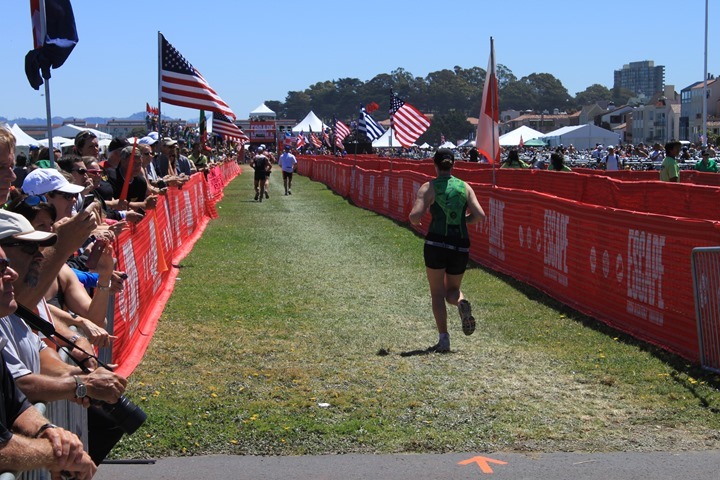
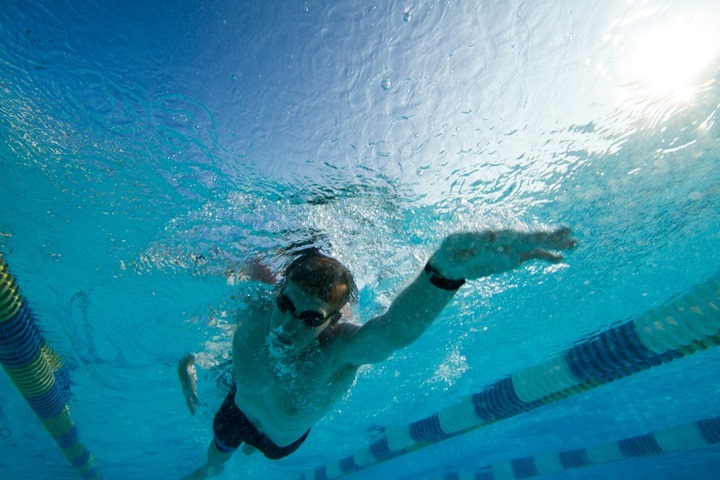
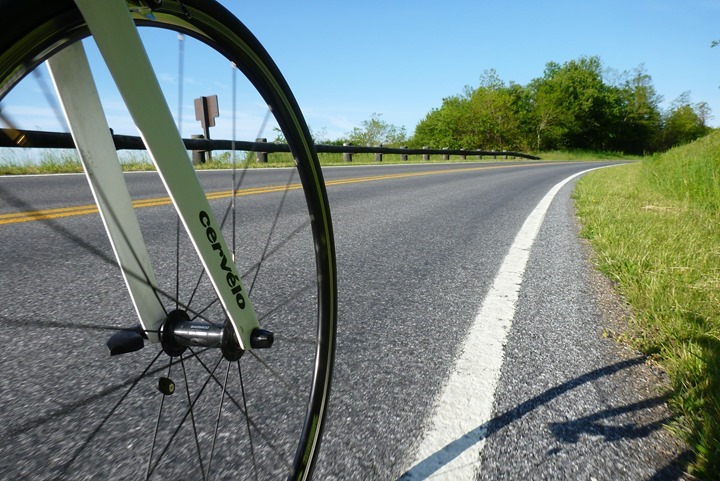
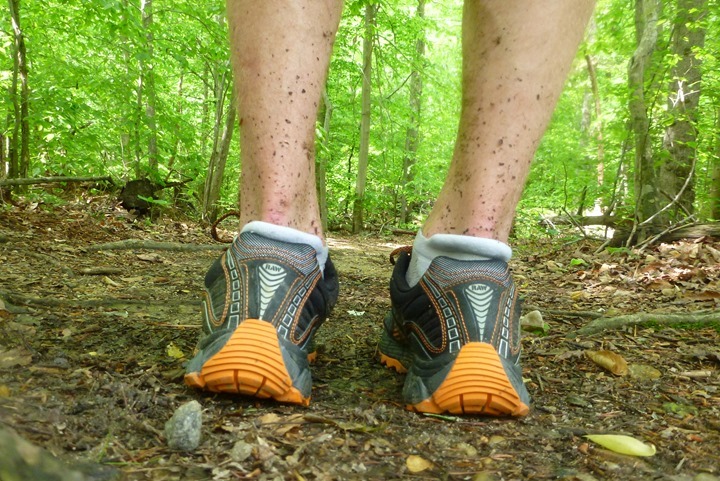


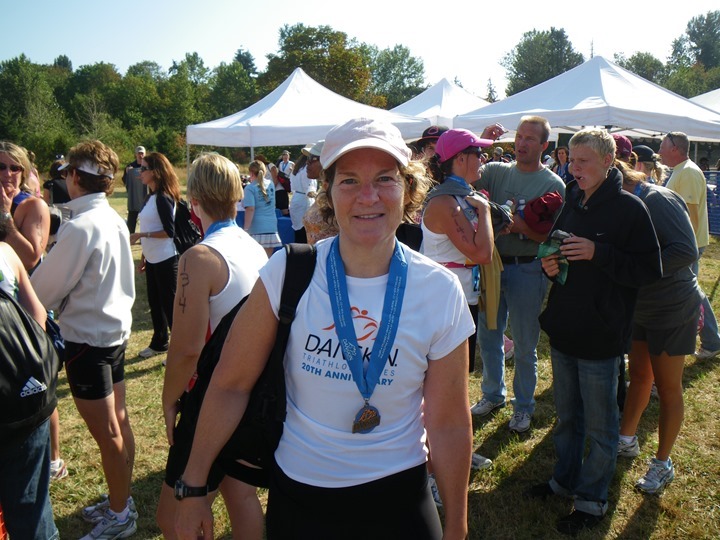
















just what i needed! happy new year Ray!
Ray…what race is that picture from?Trying to figure out who’s in that Team Z jersey.
Alcatraz this past year. Enjoy!
Ray,
When training for a tri, approx what percentage of time do you split between the 3 disciplines?
Hi James!
I went back and looked at some ‘normal’ training weeks, the split based on time was:
51% Bike
24% Run
20% Swim
Remaining 4%, strength/core.
Obviously, the long-ride really drives those numbers up quite a bit. If you pull it back more towards a shorter distance tri, they tend to get more even.
Where were you a year ago?! :) Just kidding. I did my first triathlon last September – The Nation’s Tri in D.C. I just jumped straight into Olympic distance, skipping the Sprint, and followed a pretty good training plan. I was definitely not a swimmer, and I only had running creds, but I still managed to finish with a time of 3:24:00. Not spectacular, but it was the most fun I ever had in a race. I’m currently training for the LA Marathon, but maybe my race after that will be another tri. It’s an addiction!
My goal is to train for a tri within a year. So hard with the time constraints, but then again you have way more constraints than I and you are able to do it. Thank you so much for this post. You have greatly helped me get started (i was supposed to start 2 months ago..)
I think that Master’s teams are a great way to ramp up fitness and train for your first tri. I hadn’t been in a lap pool since I was 10 and decided to join Masters at age 25. I could barley swim a lap and my technique was terrible. The coach and my lanemates were super supportive as I struggled to learn the strokes and push myself through workouts. Three years later, I am a MUCH stronger swimming. There is no way I would have logged 3600 + meter workouts to prepare for my sprint tri without my Masters team. When it came down to the race, my 500m swim was easy and I had plenty of energy for the bike and run. Also, I believe that my endurance in all three sports improved considerably through swimming. The first year with DAM was hard, both physically and mentally. But I don’t think that should stop anyone from considering a Masters team, even if you can’t really swim.
I’ll second the ‘to get better on the run, you need to get better on the bike’. And to push that even further, a friend of mine trained for and completed a full ironman triathlon with minimal run training, just extra bike work. I wouldn’t recommend this, but he said just getting his body used to 10 hours of consistent cardio allowed him to do the run with only a long run of ~1hr before hand. (some foot injury kept him off of long runs)
Hi –
Question regarding your running shoes – I’ve run in the shoes you’ve pictured (Saucony Trail Shoe) but since it has been discontinued I’ve struggled to find a good replacement. What shoes are you currently using for road and trail?
Thanks much –
BP
As a USAT Level One tri coach and personal trainer…I have to say this is the best “how to start doing tris” post I have ever seen by a non-coach. I’m usually highly critical of these types of posts and have something to add or cautions to give…but this was (as expected) VERY well done with excellent information. :D
Thanks Dana!
for the swim part, most of the swimming pools near my place are too short (a couple of kicks and you’re on the other end.) But i do have an access to the beach. what would you recommend Ray?
While openwater is good for openwater swimming, it’s really hard to get good clean sets done there with known distances, as well as get any sort of drill work done in openwater. Again, not saying it’s wrong to swim openwater, but there’s a reason why even triathletes with walk outside their home access to awesome openwater swim still do most workouts in a pool.
I would look to find other pools that are nearby that are 25 y/m.
thanks Ray
Nice guide, Ray. Wish I’d have read this before my first tri.
I’d also recommend a little more emphasis on the open water swim practice; especially your solid advice in several articles about swim warm-up being crucial, and expecting an early heart rate spike.
I’m fairly new to swimming, so excuse my ignorance. A mile swim is 1650 yards? Isn’t it 1760? Most people I know round up to 1800 to line up with lap lengths.
Maybe that’s 1650 meters? But, who’s lucky enough to have a 50m pool nearby?
Yeah, swim miles are confusing things. I don’t make the rules. ;)
A swimmers comes from the 1,500m race, which in turn translates to roughly 1650y. Wonky, yes.
This explains it a bit more: link to answers.yahoo.com
“But, who’s lucky enough to have a 50m pool nearby?”
Come to Luxembourg, mate ;)
Nice post, Ray, I’m a runner, but since I was planning on using swimming as cross training, I might consider adding the bike to that ;)
It’s a relief to see that even the great dcrainmaker was having problem with the swim endurance in the beginning. That will make me optimistic. :)
interesting you use a picture from Escape from Alcatraz for your – Kick Start your season – header pic, being that Alcatraz is March 3rd this year b/c of America’s Cup. Water should be about 50-55 degrees…awesome. You ever swim with gloves? Any suggestions?
hey ray, i heard using trainers with full-carbon bikes can damage the frame – do you agree?
No, not at all. Assuming you’re using a standard metal trainer skewer (cost: $3 at any bike shop in the world), you’re good to go. Virtually every cyclist (pro or not-so-pro) uses their bike on a trainer, all seasons, no issues.
Hi Ray,
Thanks for this great post I’ve been following you blog for a while, but I only started training for a triathlon 3 months ago. Before that, I was training for marathons and I’m also an experienced cyclist. I found your blog while looking to buy a runnign watch. With you reviews, I finally bought the FR610 from Garmin. Now, I have a question. I’m realy into tri and I wonder what’s the best tool. Would it be better to complete my watch with an Edge (maybe 800) that I could use for the bike part and also when doing bike rides just for fun or would it be better to get the all in one FR910XT from Garmin?
Training-wise, I don’t really see the advantage of the FR910XT as I always look at the huge clock at the pool when doing intervals or timing my laps. I guess it could be useful for openwater swiming as the FR610 is only IPX7. However, I find that a watch isn’t the best tool for bike rides. I know there’s some mounting systems to get a better look at it, but the screen is a little bit small, no?
I would greatly appreciate your advise on this topic.
Thanks and keep up your good work!
Blaccko
Very clear, very simple, It seems quite easy…in words. Reading your tips makes me feel comfortable in trying a race. Actually I’m training for the Paris Marathon, but after that I could try a sprint in the early summer.
Thank you!
Hi Ray,
Thanks for this great post, it is very useful for all newbies! I am just starting the 12 week prep for my first sprint, and I have a question, not about this first tri, but the second one.
How much should I space my races, and how should I roughly cut my 12 week prep (base, build, peak) to go from my first tri to the second?
got to make my mind up since most of the nearby short distance ones sell out pretty quickly around here.
Thanks!
Generally speaking I try and space races about 3-5 weeks apart, with 4-5 being optimal. The reason is that it allows for one complete build cycle, and then the week before the race is a combo easy/taper week.
This way, you can take any part of your build phase and overlay it onto a race and simply train ‘through’ an early season race.
For example, The Girl this weekend is running Barcelona Half-Marathon, but she’s not actually doing any major taper for it. She’s simply taking an easy week as otherwise planned on a cycle, and then straight into the race. She’ll take a few days recovery (easier stuff/bike/etc…) early next week to reduce chance of injury, but by the weekend she’ll be doing another long run (20+ miles), just like yesterday.
OK I understand, it makes good sense! Thanks for the helping hand, and good luck for The Girl’s race in BCN! Looks like the weather will at last cooperate!
Hi Ray,
I am planning to do my first ever triathlon this summer. I have ran many 5ks and a couple half marathons. I am currently is great shape and have been training for a 5k as well as cross training on the bike. I have participated in RAGBRAI, which is typically a 40-75 mile ride each day of the week across the state of Iowa. So my question is, should I sign up for the sprint, or the olympic?
Thanks!
Tyler
I’d go Olympic. You’ve definitely got the running/cycling base there already. Just add in the swimming piece and you’ll be good to go.
What I would do though is start with a sprint tri first on your schedule, and then set an Olympic a month or so later. Just so you can get the hang of the whole crazy triathlon thing.
I’m looking for a website or an app to buy a good training program for the olympic distance.
I found a few but I have no experience and no idea which one I can trust.
Do you have any recommendations?
This blog definitely inspired me to write a post on booking the dam the race. I tried to be funny and would love to get a shout out DCR. Keep up the good work.
Question: What do you do when you are done product testing, send it back?
I know this was over 12 years ago, but still very helpful. I am 60 and just registered for my first sprint that has a 750m lake swim a little less than six months out. Starting from scratch and learning to swim is up first. I can flounder around somewhat. It is Fall in the midwest and I am struggling to find lesson availability and indoor access. Any suggestions welcome.